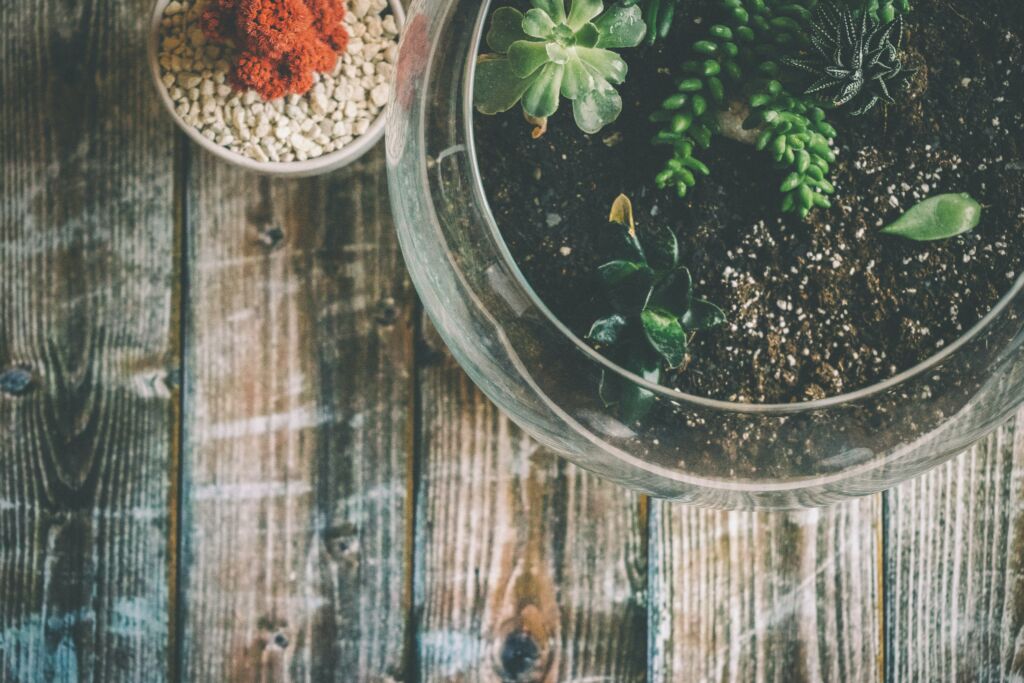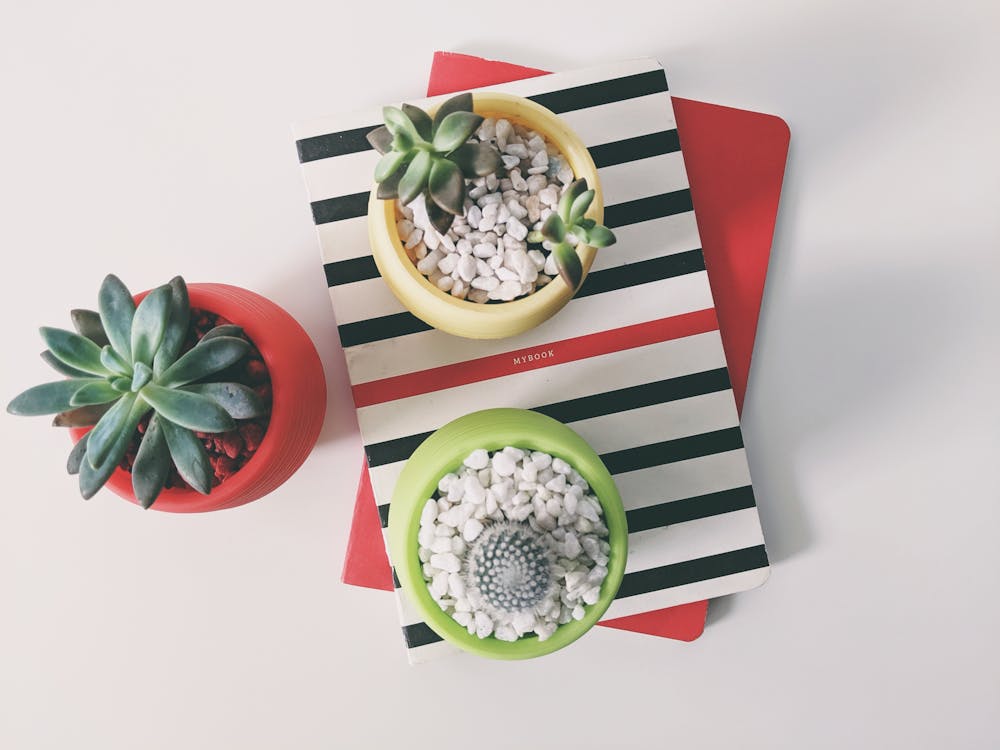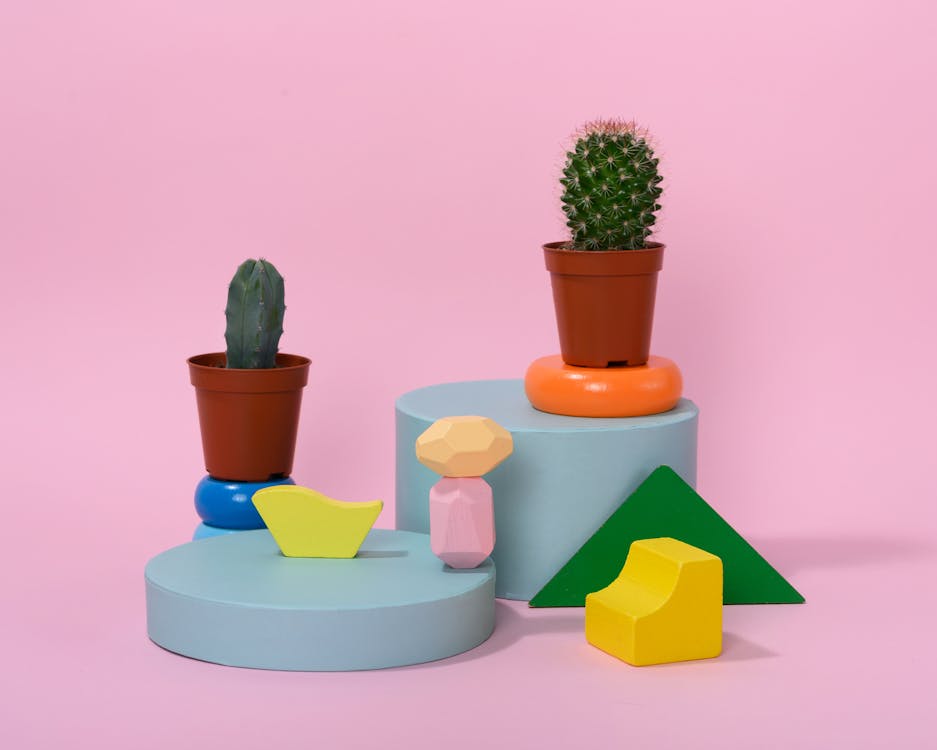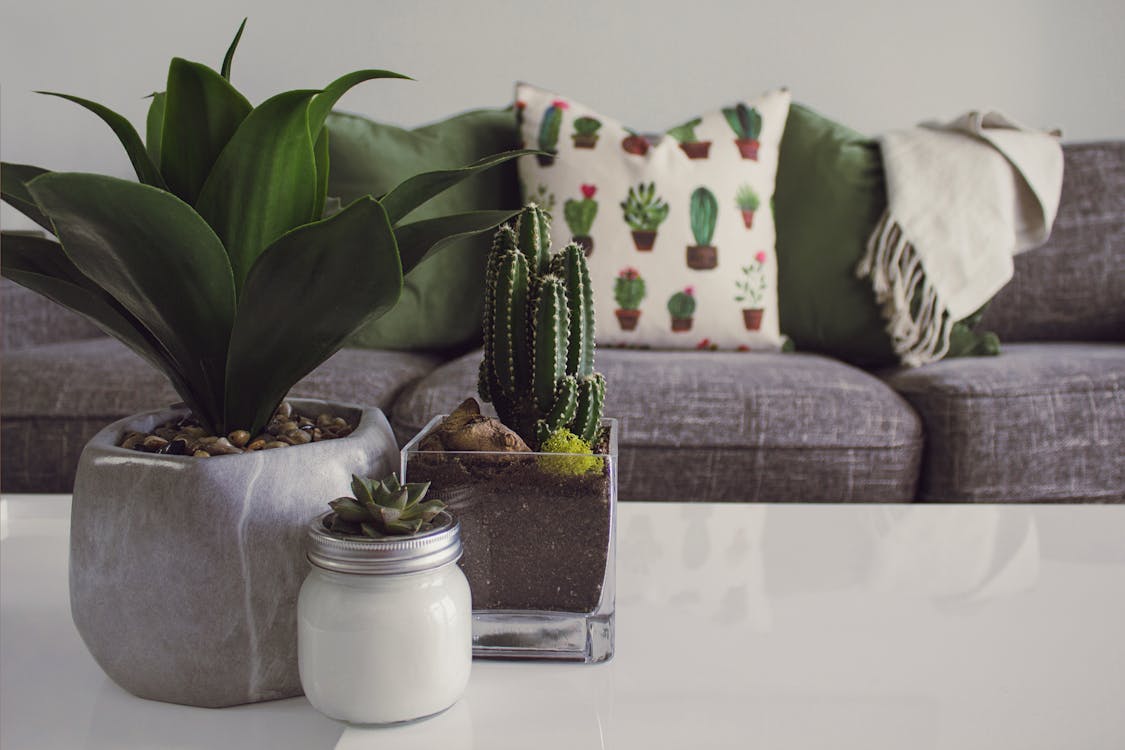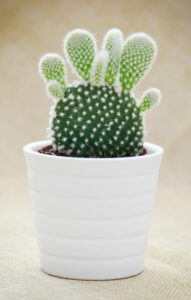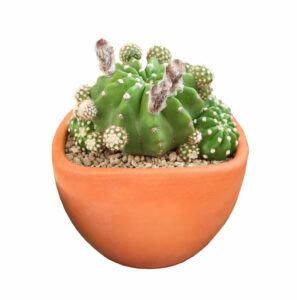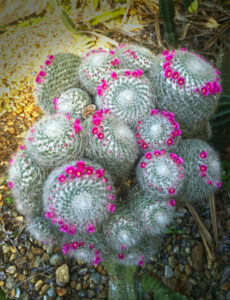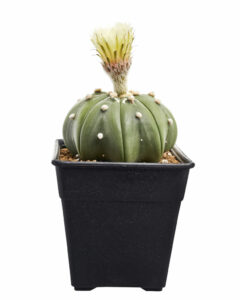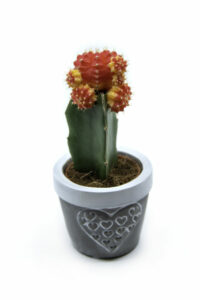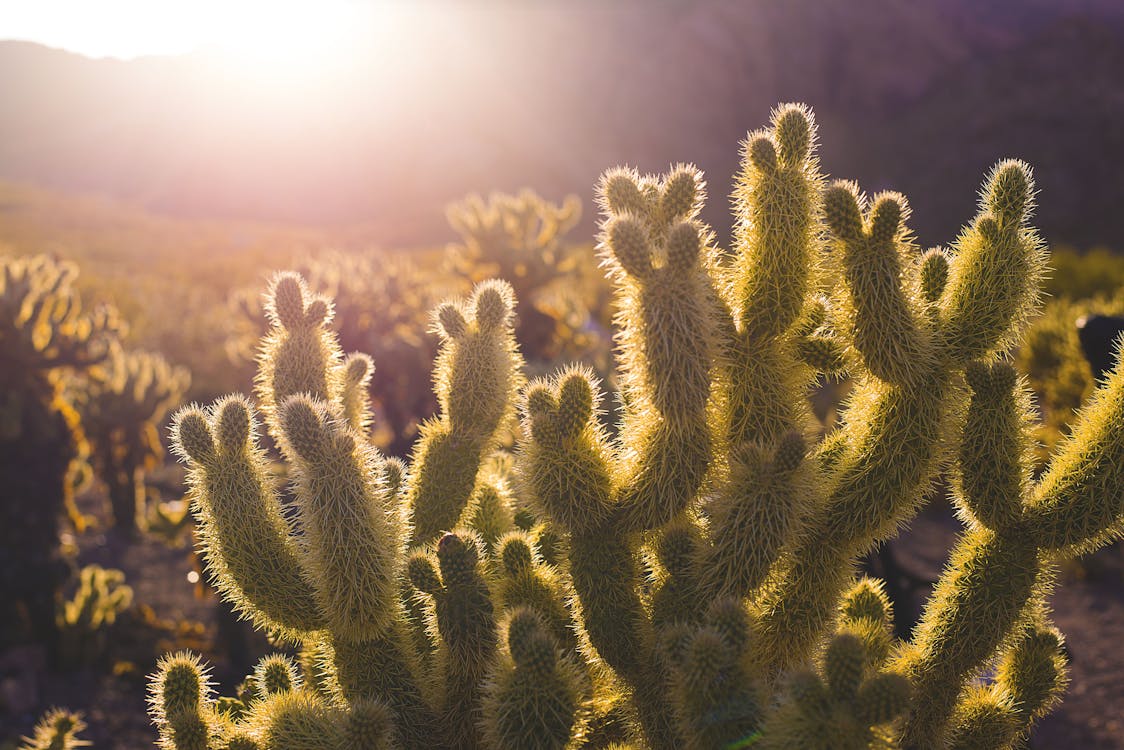HousePlantJoy is supported by our audience. When you purchase through one of our links, we may earn a small affiliate commission. As an Amazon Associate I earn from qualifying purchases. Your cost is not affected.
==================
Here are the best miniature cactus terrarium plants to add elegance to your décor.
Belonging to the Cactaceae family, cacti are prevalent indoor plants. These plants are known for a plethora of species, each having a distinctive appearance. Cactus terrarium plants are also a stunning addition to any home or office, bringing nature indoors.
A cactus loves to thrive in dry, hot environments. While they need minimal water, a well-drainage system is crucial for a colorful cactus garden. They can store water which helps them to survive droughts. Due to their distinctive appearance, mini cactus terrariums are a hot new trend.
The terms cacti and succulents are often used interchangeably. However, they aren’t the same and have some differences. Firstly, while all cacti can be succulents, not all succulents can be cacti. Secondly, cacti feature areolas structures and small cushioned shapes that grow spines. On the other hand, succulents don’t have areolas, so they belong to a different family.
Moreover, while cacti are commonly seen as desert plants, they can be great indoor plants too. Below, we have bucketed the best cactus terrarium plants you can grow indoors.
How to Make Cactus Terrarium?
Many think they can grow and create a colorful mini cactus terrarium using an old terrarium. However, as you might expect, it’s not true that tropical conditions and desert environments aren’t a good match.
The key to making a mini cactus terrarium work is understanding and meeting their requirements. With the proper setup, it is possible to keep these spiky wonders thriving indoors.
· Choose the Right Cactus Terrarium
Cactus Terrariums are beautiful for all their diversity. However, having a closed container to grow cacti is a recipe for disaster. While the great qualities of a terrarium let us grow tropical plants indoors, these qualities go against us when we try to cultivate arid plants. Here is why an enclosed terrarium is not a good option for creating a colorful cactus garden:
Humidity: Cacti love to thrive in dry environments and cannot tolerate humidity. A closed terrarium is quite humid and traps the moisture within.
Water Retention: In order to create a proper water cycle within a terrarium, you will have to retain sufficient moisture in the foundation. Cacti love water, but they will rot instantly on a soggy substrate.
Drainage: In order to prevent excessive water retention, a cactus terrarium needs proper drainage. While a drainage layer is helpful, a drainage layer full of water quickly wicks up into the substrate, generating more humidity in a closed terrarium.
Ventilation: Proper airflow is crucial to keep your cacti dry. However, closed terrariums can block the airflow and create a problem when combined with humidity.
So, it is nearly impossible to grow and make your cacti flourish in a closed terrarium. An open terrarium is an appropriate option if you want to create a mini cactus terrarium.
The Best Setup for a Cactus Terrarium
A wide-open container, such as a shallow bowl or dish, is ideal for growing cacti indoors. Terrariums like these help minimize humidity levels and maintain proper airflow, which is crucial for a thriving cactus.
In order to make your cactus terrarium plants successful, make sure to stay away from sealed containers.
Cactus Terrarium Layers
Note that cacti need proper root aeration and drainage than most to thrive. So, the substrate you choose is important here. There are two main cactus mixes; soil-based and gritty.
Gritty mixes contain clay pebbles and volcanic rock with a small amount of substrate basis like coco fiber. A rocky mix is excellent for providing proper root aeration in drains and dry times, which helps prevent root rot. However, it also means you will have to water your cacti more often.
On the flip, soil-based mixes are what you will get if you buy a pre-packaged bag from a store. These mixes often contain typical terrarium ingredients with a higher percentage of supplements to improve drainage.
So, I recommend using all-in-one solution gritty mixes to make your cactus growth healthy and create a mini cactus terrarium or colorful terrarium garden.
You might want to read more about terrariums in this article.
Best Cactus Terrarium Plants
Cacti are famous for flirting with sunlight, but many verities can thrive indoors. For adding a unique look to your décor, you can place your mini cactus terrarium on a window sill or in the living space. Indoor cacti verities are small in size and need less light, making them outstanding houseplants.
1. Bunny Ears Cactus (Opuntia Microdasys)
Having origins in Mexico, the bunny ears cactus is one of the best cactus terrarium plants for creating a colorful cactus garden indoors. The plant is named after its appearance having two ear-shaped bunny pads. They feature brown prickles or glochids, so handle them with care.
The plant can grow up to three feet in height, making it an excellent indoor houseplant. The plant needs adequate light to bloom in the summer. Bunny ears cacti produce yellow or white flowers and purple fruits.
It is a low-maintenance plant and likes full sun exposure. The plant has several other names, including polka dot cactus and angle’s wing cactus.
Care Tips
- The plant is easy-to-care-for and can thrive on neglect. However, still, make sure that it gets plenty of light.
- Do not overwater because it is susceptible to rot. The plant is drought-tolerant and doesn’t need frequent watering.
- Like many other cacti verities, it loves sandy, dry, and well-draining soil.
- It thrives in warm, dry environments.
- Protect your plant from excessive humidity or frost.
- Since the cactus can grow well in poor-quality soils, regular fertilization is not necessary.
2. Domino Cactus (Echinopsis Subdenudata)
Domino cactus is one of the best cactus terrarium plants that you can grow inside a mini cactus terrarium. The plant features small wooly spines, resembling the dots on a domino. As a member of the Echinopsis family, the plant is native to South America.
In the summer, the cactus produces a distinctive large white flower, blossoming at the end of a long stem. This is a sight to behold, as these flowers have a brief life span – they generally bloom at nighttime and start witling away the next day.
Growing domino cactus to create a colorful cactus garden is straightforward. It is a low-maintenance plant and can thrive in a variety of environments. While it is often referred to as Blooming Hedgehog, don’t worry about it being prickly because of its tiny spines.
Care Tips
- Make sure not to overwater your cactus.
- Use a cactus soil mix for growing domino cactus problem-free.
- Do not let its root stand in the water, or it can cause root rot.
- The plant needs at least 6 hours of direct sunlight.
- Protect your cactus from frost and cold temperatures.
- Feed your cactus during spring and summer.
3. Chin Cactus (Gymnocalycium)
A chin cactus can be an excellent addition to your cactus terrarium plants. The plant comprises more miniature cacti that produce incredible, colorful flowers. Not only is the plant good-looking, but also easy to grow and care for. Striking alluring shapes and delivering hypnotic flowers, these cacti are attractive ornamental houseplants.
The cactus is from the Cactaceae family, native to various countries, including Argentina, South America, Southern Bolivia, and Paraguay. Chin cactus also have the same soil, water, and nutrient requirements as their other desert cousins have.
There are about fifty species of chin cactus, many of which are ornamental plants. However, the most common one is a grafted variety (Lollipop or Moon Cactus). They can be bright yellow or red and require a green rootstock for synthesizing food.
Care Tips
- Growing chin cactus in well-draining soil is crucial. It will make watering your plant a piece of cake.
- In hot temperatures, chin cactus need protection from the intense sun rays. Not that extreme sunlight can cause harm, making your plant fail to bloom.
- The plant likes partial shade, cool, and well-ventilated environments.
- Protect your plant from frost. They can tolerate mild frost but not for too long.
- For a thriving chin cactus, well-draining, porous soil is crucial.
4. Saguaro Cactus (Carnegiea Gigantea)
Unlike other tiny cacti plants, the Saguaro cactus can grow up to 40 feet. However, the plant is an extremely slow grower, so you can grow it indoors, making a mini cactus terrarium. The barrel-shaped body of the plant gives it the classic appearance of a cactus.
The plant is native to the Sonoran Desert and needs plenty of light to flourish. It also features peripheral stems called arms. The exterior is pleated, and for pleat expansion, it stores extra water in its tissues during the rainy season.
A ten-year Saguaro cactus may only be 8cm tall, which means it takes decades to resemble the adults.
Care Tips
- A well-draining soil is crucial for the plant.
- In drier and hotter environments, water your plant adequately.
- If possible, place a hose about five feet away from the trunk for at least 30 minutes once a month.
- Saguaro cactus does not need water in cooler months of the year.
5. Old Lady Cactus (Mammillaria Hahniana)
The old lady cactus belongs to the Cactaceae family, which has around 200 cacti species. As an easy to take care of, the old lady cactus is one of the best for making a colorful cactus garden. The plant is also a lovely choice for any home and dull office.
The plant strikes dazzling spherical stems covered in sharp white spines. These spines can grow up to four inches and are about 5 inches wide. Moreover, the cactus is also among plants that don’t like to be lonely and often flourish in groups to form a collection of spheres.
Old lady cactus produce reddish-purple color flowers that form a crown at the top of the cactus. Nevertheless, these stunning flowers resemble a perfect headband and create a halo effect, making it one of the most beautiful cactus terrarium plants.
Care Tips
- There’s a time for everything; the same applies to the old lady cactus plant. When watering, make sure the soil is dry.
- Water retention is a crucial factor for the growth of your cactus. It means you should choose appropriate soil. A well-draining, porous soil will help keep your plant flourishing.
- Cacti go through their growing seasons in the spring and summer. While in the winter, their growth comes standstill. So, the growing season is the best time to fertilize your cactus.
6. Star Cactus (Astrophytum Asterias)
The start cactus is a slow-growing houseplant popular among gardening enthusiasts for its distinctive star-liked shape and gorgeous flowers. The plant is a spineless cactus. According to the United States Fish & Wildlife Service, the cactus is among the endangered cacti species. The plant has other names, such as star peyote, sand dollar cactus, and sea urchin cactus.
At maturity, the low-maintenance cactus can grow up to three inches tall and about six inches wide. The cactus resembles a star with eight triangular sections surrounding the wooly areoles, triking a ribbed structure.
Start cactus has a grayish-brown appearance covered with dots. During the bloom season in March and May, it produces yellow flowers with orange centers, adding a surprising look into a mini cactus garden.
Care Tips
- Plant the start cactus in the soil in sandy soil with proper drainage. It allows water to drain, which helps your cactus not to perish.
- Like its other desert cousins, the start cactus also loves flirting with full sun. Placing it near a sunny window can help provide direct sunlight.
- Water your cactus sparingly to prevent root rot. However, thoroughly watering once a month is sufficient during the growing season.
- A mix of balanced fertilizers is essential for your cactus during the growing season.
- Try to place your cactus in an environment with temperatures above 70 degrees Fahrenheit.
7. Easter Cactus (Hatiora Gaertneri)
Easter cactus makes for a spectacular table centerpiece, colorful cactus garden, window accessory, or a beautiful addition to your fireplace mantle. The plant is easy to care for all year round and requires little to no maintenance.
Native to Brazil, the Easter cactus is a low-maintenance houseplant that produces beautiful flowers in November. You can find it by looking at its serrated green leaves resembling crab claws. The flowers can be tube-like and red or magenta. However, the plant isn’t a true cactus but an epiphyte, which means it lives on other plants.
The Easter cactus, Thanksgiving cactus, and Christmas cactus resemble each other. Stores often use blanket names like “holiday cactus” or “Christmas cactus” for these plants. The difference between these plants lies in their bloom times and leaves:
Easter Cactus: The Easter cactus strikes rounded leaves and blooms in February or March.
Thanksgiving Cactus: The Thanksgiving cactus features claw-like leaves and blooms in late fall.
Christmas Cactus: The cactus has scalloped leaves blooming in the early winter.
Care Tips
- Avoid using regular potting soil, which is often excessively dense for these plants. Instead, a potting mix of moss, perlite, sand, pumice, and gravel is excellent for draining water.
- Easter cactus requires no to minimal care. However, appropriate watering is essential.
- It thrives in indirect sunlight environments. So, keep your cactus a couple of feet away from a sunny window or use sheer curtains to filter the light.
- Pruning your cactus after its bloom season will enhance its growth, making it grow bigger and bushier.
8. Moon Cactus (Gymnocalycium Mihanovichii)
Moon cacti are popular indoor houseplants, and gardening enthusiasts love their tiny size and vibrant colors. These cactus terrarium plants look incredible in any home because of their beautiful flowers. Native to South America’s deserts in Argentina, Brazil, and Paraguay, the moon cactus is a member of the Cactaceae family.
At maturity, the plant can grow up to two inches wide, featuring clusters of small, sharp spines. Since the moon cactus is a mutant and do not feature chlorophyll, it strikes vivid colors from neon yellow to hot pink. Additionally, they need grafting onto a rootstock cactus because of the lack of chlorophyll.
While it is common to graft moon cactus with “dragon fruit,” you can combine it with green cactus of desired species.
Care Tips
- A rootstock moon cactus needs both a balance of light and shade. Provide sufficient sunlight for photosynthesis.
- Overwatering can appeal to mealybugs or cause root rot. While potting soil mix for cacti is appropriate, you can add coarse or perlite for proper drainage.
- Like other species of cacti, the moon cactus also needs water sparingly. Just make sure to thoroughly soak the soil when watering. Let the soil dry out between watering.
- Put your cactus where the temperature shouldn’t fall below 60 degrees.
- It’s okay to keep your moon cactus outdoors when it is hot. However, bring it indoors during colder temperatures to prevent frost.
9. Rattail Cactus (Disocactus Flagelliformis)
The retail cactus or Rat Tail cactus is a flowering cactus native to South America and Mexico. The plant produces vibrant pink or red flowers with trailing tubular stems resembling a monkey tail cactus. The flowers are stunning for creating a mini cactus terrarium. It can also be an excellent option if you want a low-maintenance cactus or a unique plant for creating a color cactus garden indoors.
Care Tips
- Make sure to plant your cactus in a terrarium of appropriate size. The long stems of the plant descend as they grow.
- Fertilize well to enhance the growth of your cactus. Add a half-strength dose of liquid fertilizer to feed your plant during the growing season in spring and early summer.
- Native to USDA Hardiness Zone 9-11, the rattail cactus needs full sun to thrive. So, exposing your plant to direct sunlight by placing it in a sunny window can help mimic a desert environment.
- It also needs adequate soil. Plant your cactus in a terrarium lined with sphagnum moss and fill it with desired potting mix.
- These cacti love consistent watering during hot temperatures. However, relocate your cactus to a cooler place and water sparingly during cold conditions.
10. Peanut Cactus (Echinopsis chamaecereus)
The peanut cactus plant is among the best cactus terrarium plants you can grow indoors. These cacti feature many finger-like stems and stunning flowers during the bloom period starting from summer to spring. Native to Argentina, the plant is a clustering, mat-forming cactus with shallow roots.
Peanut cactus can grow up to six inches and are about 12 inches wide. They produce stunning large, reddish-orange flowers covering much of their clump during the late spring and early summer. The plant is popular in hot areas for creating colorful cactus gardens indoors because of its distinctive appearance and appealing flowers.
Care Tips
- Allow the soil to dry out before watering thoroughly and deeply during hot conditions.
- In colder months and during the dormant period, cut back on watering.
- It loves hot, dry climates. Exposing it to cooler conditions during winter can help encourage blooming. Average household humidity is acceptable.
- The cactus doesn’t require regular fertilization. However, fertilizing once a month is beneficial during the growing period.
Should you add some of the best cactus terrarium plants?
We think so! Choose from these ten best cactus terrarium plants you can grow indoors to create a colorful cactus garden. Since all these cacti are easy to care for and require low maintenance, they are a good option for beginners.
FAQs
Should I put cactus and succulents together in a terrarium?
It is possible to grow succulents and cacti together in a terrarium. However, make sure they don’t touch one another.
Can I cultivate a cactus in a closed terrarium?
Cacti look stunning in terrariums, but these plants need to be dry. They cannot survive in a closed terrarium due to improper airflow and high humidity.
Read More:
15 of the Best Types of Cactus You Can Grow at Home

